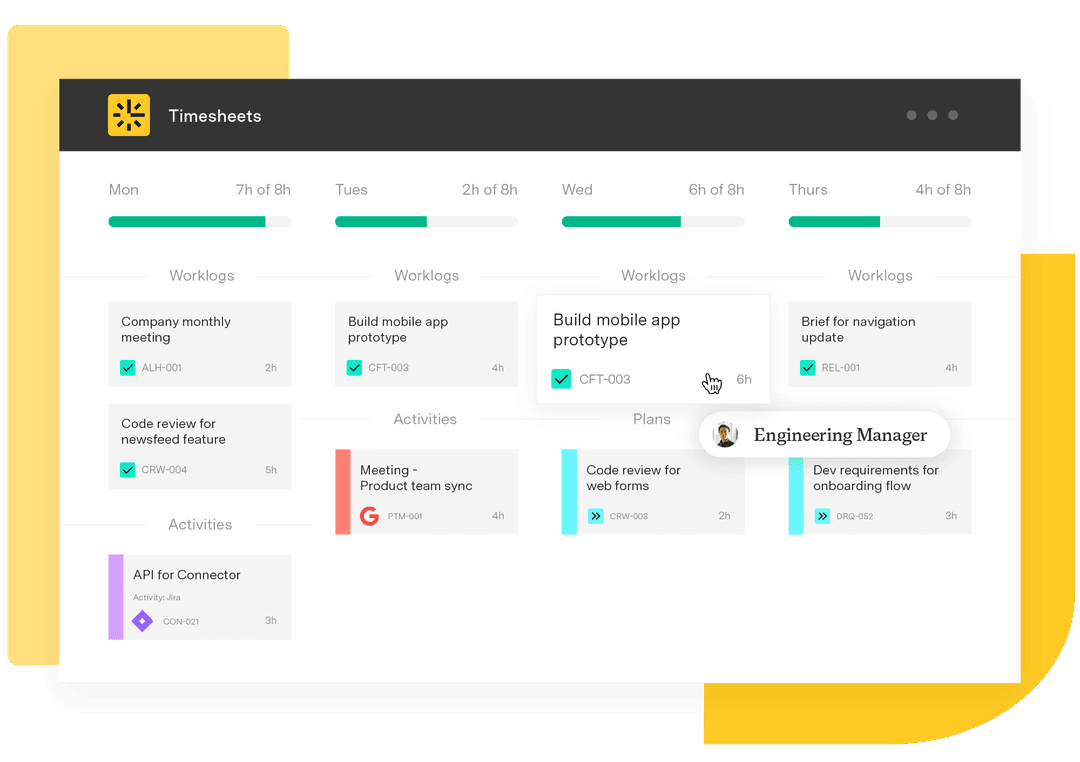incident response plan template
Tempo Team
Incidents don’t send a calendar invite. They show up unannounced, and before you know it, your team is scrambling to respond. Without a clear plan, it’s easy to extend downtime and increase risk.
An incident response plan template gives your team a framework to handle the unexpected. It outlines how to detect threats, communicate with stakeholders, and get systems back up fast.
Here are six great templates and how to use them.
What is an incident response plan template?
An incident response plan template is a ready-to-use, customizable document that helps teams respond to cybersecurity incidents systematically. It lays out clear incident response steps so you can contain attacks and recover systems as quickly as possible.
Rather than figuring things out in the middle of a crisis, a template gives you a roadmap to follow, outlining everything from detection and containment to eradication and recovery. This makes it easier for everyone to understand their roles and responsibilities. Whether you’re managing an IT incident response plan, a cybersecurity incident response plan, or a data breach response plan, a template lets you respond consistently and keep stakeholders informed.
A well-crafted template also supports ongoing cybersecurity risk management because it offers a structure for analyzing events and refining your incident management plan over time. Jira service management and Tempo enhance this process by providing operational data and insights to improve future response efforts.
Components of an incident response plan template
A strong incident response plan template tells everyone what to do, who’s in charge, and how to recover quickly – without wasting time figuring things out on the fly.
Here’s what a practical incident management usually includes:
Roles and responsibilities
Cybersecurity incidents can bring confusion. Who’s handling containment? Who’s talking to stakeholders? Who fixes the systems? This template section maps out roles and responsibilities so everyone knows exactly what they need to do. Backup roles make sure the plan works even if a key person isn’t available.
Incident classification and severity levels
Not all incidents are the same. A ransomware attack that locks critical systems needs immediate action, while a minor intrusion may be handled quickly without disrupting business. Classifying events by type and severity helps your team prioritize resources and respond in a way that matches the risk.
The six phases of incident response
A practical incident response plan typically follows six phases:
Preparation: Implement security controls, train your team, and configure Jira.
Identification: Detect unusual activity or potential cybersecurity threats.
Containment: Stop the attack from spreading.
Eradication: Remove the threat and remediate vulnerabilities.
Recovery: Restore systems, verify computer security, and resume normal operations.
Lessons learned: Update the incident management plan and improve processes for next time.
These phases give your team a framework they can follow under pressure so you don’t miss any steps when an incident occurs.
Communication plan
When something goes wrong, communication can be just as important as the technical response. A clear communication plan outlines who needs updates, what to share, and which channels to use. Aligning internal teams and external stakeholders builds trust and makes sure everyone knows the next steps.
With these sections, your incident response plan template becomes a practical guide your team can rely on to respond confidently – even when the unexpected hits.
6 incident response plan templates
Every incident response plan template should give your team a ready-made framework to follow when something goes wrong. Below are six practical templates with simple outlines you can adapt and expand based on your organization’s needs. Each one is a fill-in-the-blank guide so you don’t waste time figuring out what to document or who to notify.
1. General IT Incident Response Template
This template is best for everyday IT issues like server crashes or application failures.
Template:
Incident ID:
Date/Time Detected:
Reported By:
Systems Affected:
Severity Level: Low / Medium / High
Assigned Roles:
Incident Lead:
Containment:
Communication:
Steps Taken: Identify → Contain → Remediate → Recover
Notes / Lessons Learned:
2. Cybersecurity and Malware Response Template
For malware infections, phishing, or other cybersecurity threats, you need a template that outlines the vital steps to take.
Template:
Incident ID:
Threat Type (malware, phishing, intrusion, etc.):
Date / Time Detected:
Detection Method: (SIEM, manual report, monitoring tool)
Impacted Systems / Data:
Response Team Members:
Incident Response Steps:
Identify threat
Isolate affected systems
Eradicate malware/intrusion
Recover systems
Document and revise policies
Recommendations / Next Steps:
3. Data Breach Notification Template
Manage a data breach response plan while meeting regulatory requirements.
Template:
Incident ID:
Date / Time Discovered:
Breach Description
Type of Data Affected: (PII, financial, health, etc.)
Stakeholders to Notify: Internal team, customers, regulators (MS-ISAC, CIS, etc.)
Communication Plan: Who, how, and when notifications are sent
Containment Actions:
Recovery Plan:
Follow-Up / Remediation Steps:
4. DDoS Attack Response Plan Template
Distributed denial-of-service (DDoS) incidents impact availability, which means you need to remediate fast.
Template:
Incident ID:
Date / Time Detected:
Attack Vector: (volumetric, application-layer, etc.)
Impacted Services:
Response Roles:
Monitoring and analysis:
Mitigation actions:
Stakeholder communication:
Incident Response Steps:
Identify abnormal traffic
Contain/redirect traffic
Mitigate with a firewall / upstream provider
Recover services
Record lessons learned
5. Ransomware Response Playbook
This template is best for ransomware attacks targeting systems or data.
Template:
Incident ID:
Date / Time Discovered:
Impacted Devices / Systems:
Point of Entry (if known):
Response Roles:
Containment lead:
Recovery lead:
Communications:
Incident Response Steps:
Isolate infected systems
Identify the ransomware type
Contain and eradicate infection
Restore from backups
Communicate status to stakeholders
Conduct post-incident review
Prevention / Policy Updates:
6. Service Outage Communication Template
Outages require clear, timely communication, and this template helps you avoid missing steps.
Template:
Incident ID:
Outage Description:
Date / Time Detected:
Estimated Recovery Time:
Impacted Users / Services:
Communication Plan:
Internal updates:
Customer notifications:
Status page updates:
Response Team Roles:
Recovery Actions:
Post-Outage Review / Improvements:
Improving incident response with Tempo
A strong incident response plan template helps your team act quickly when the unexpected happens. But the real advantage comes after the dust settles – when you can see exactly what happened and how to prepare for the next challenge. That level of clarity is what Tempo brings to your team inside Jira.
With Tempo Timesheets, you track every hour spent on identification, containment, eradication, and recovery in detail. Instead of vague estimates, you get hard data that reveals bottlenecks and shows where your team’s time delivers the most impact. And with Strategic Roadmaps,
These tools transform your incident management plan from a static checklist into a strategic advantage. Try Tempo today and give your team the clarity they need to respond smart and with confidence.












































